
The Institute for Catalan Studies, also known by the acronym IEC, is an academic institution which seeks to undertake research and study into "all elements of Catalan culture". It is based in Barcelona, Catalonia, Spain.
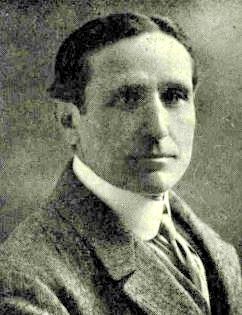
Pompeu Fabra i Poch was a Catalan engineer and grammarian from Catalonia, Spain. He was the main author of the normative reform of contemporary Catalan language.

Valencian or the Valencian language is the official, historical and traditional name used in the Valencian Community of Spain to refer to the Romance language also known as Catalan, either as a whole or in its Valencia-specific linguistic forms. The Valencian Community's 1982 Statute of Autonomy and the Spanish Constitution officially recognise Valencian as the name of the regional language.
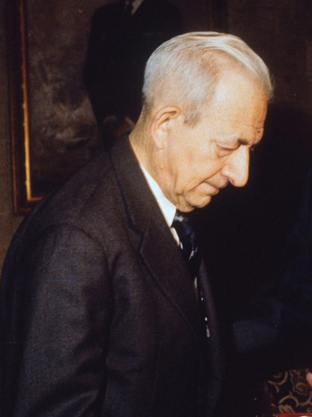
Joan Coromines i Vigneaux was a linguist who made important contributions to the study of Catalan, Spanish, and other Romance languages.
The Catalan and Valencian orthographies encompass the spelling and punctuation of standard Catalan and Valencian. There are also several adapted variants to the peculiarities of local dialects of Insular Catalan.
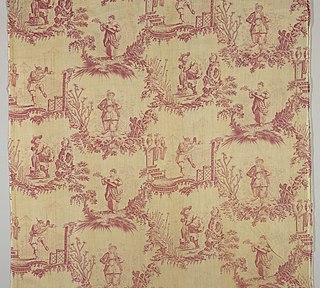
Percale is a closely woven plain-weave fabric often used for bed covers. Percale has a thread count of about 140 or higher and is noticeably tighter than twill or sateen. It has medium weight, is firm and smooth with no gloss, and washes very well. It is made from both carded and combed yarns, and may be woven of various fibers, such as cotton, polyester, or various blends.
The Acadèmia Valenciana de la Llengua, also known by the acronym AVL, is an institution created on September 16, 1998, by the Valencian Parliament, which belongs to the set of official institutions that compose the Generalitat Valenciana, according to the Act of Autonomy of the Valencian Community.
The Catalan manual alphabet is used in Catalan Sign Language but was not officially recognized as one of Catalonia's official languages until 3 June 2010 when Law 17/2010 of the Catalan sign language (LSC) was approved by the government. The Catalan manual alphabet is single-handed and is extremely similar to the Spanish manual alphabet. As a result, people who use Spanish Sign Language can understand approximately up to 80% of the Catalan sign language.

Francesc de Borja Moll Casanovas was a Catalan linguist, philologist and editor from Menorca. He wrote many books on the Catalan language and its varieties spoken on the Balearic Islands. He was also the main collaborator with Father Antoni Maria Alcover in his Diccionari català-valencià-balear.
Old Catalan, also known as Medieval Catalan, is the modern denomination for Romance varieties that during the Middle Ages were spoken in territories that spanned roughly the territories of the Principality of Catalonia, the Kingdom of Valencia, the Balearic Islands, and the island of Sardinia; all of them then part of the Crown of Aragon. These varieties were part of a dialect continuum with what today is called Old Occitan that reached the Loire Valley in the north and Northern Italy in the east. Consequently, Old Catalan can be considered a dialect group of Old Occitan, or be classified as an Occitano-Romance variety side by side with Old Occitan.

Josep Maria Nadal i Farreras is Professor of History of Language at the University of Girona.
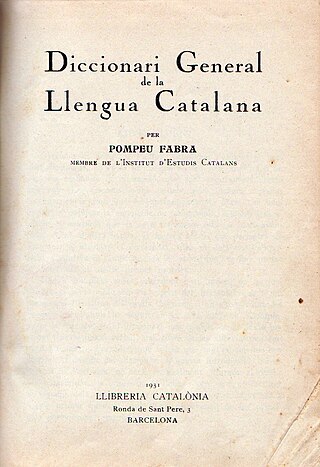
The Diccionari General de la Llengua Catalana by Pompeu Fabra is a Catalan dictionary, first published in fascicles in 1931. It was the Standard Catalan dictionary until 1995, when the Institut d'Estudis Catalans published its Diccionari de la llengua catalana.

The Catalan dialects feature a relative uniformity, especially when compared to other Romance languages; both in terms of vocabulary, semantics, syntax, morphology, and phonology. Mutual intelligibility between its dialects is very high, estimates ranging from 90% to 95%. The only exception is the isolated idiosyncratic Alguerese dialect.
Optimot, linguistic inquiries, is a service provided by the Directorate - General of Linguistic Policy of the Catalan Government in collaboration with the Institute for Catalan Studies and the Terminology Center TERMCAT. It consists of a search engine for linguistic information that helps to clarify doubts about the Catalan language. With Optimot different sources can be checked at the same time in an integrated way. When the search options provided by Optimot do not manage to answer the linguistic question, a personalized inquiry service can be accessed.

Maria Dolors Bramon Planes is a Spanish philologist, historian, and university professor specializing in the Muslim world.
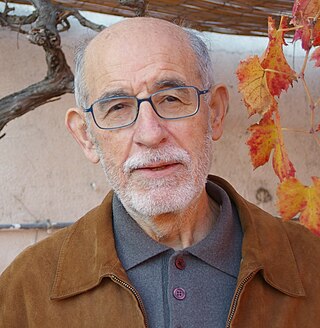
Joan Solà Cortassa was a Spanish linguist and philologist. He was professor of Catalan language and literature at the University of Barcelona from 1984 onwards, and vice president of the Institut d'Estudis Catalans (IEC) from 2009.

The Normes ortogràfiques are a list of 24 rules which were promulgated by the Institut d’Estudis Catalans on January 24, 1913, with the purpose of regularizing Catalan spelling. They were made to establish a graphic codification for the Catalan language, which at the time did not have a system of unitary spelling.

La Veu de Catalunya was a Catalan newspaper founded by Enric Prat de la Riba that was published in Barcelona from 1 January 1899 to 8 January 1937, with two editions daily.
These are lists of spelling-to-sound correspondences in the Catalan language. The two main standard forms are used as primary transcriptions norms of their respective spelling forms.

Maria Teresa Cabré i Castellví is a Catalan linguist. She is professor emeritus of Linguistics and Terminology at Pompeu Fabra University (UPF). Since 2021, she has been president of the Institute for Catalan Studies. Her areas of expertise are in lexicology, lexicography, terminology, and discourse analysis.













